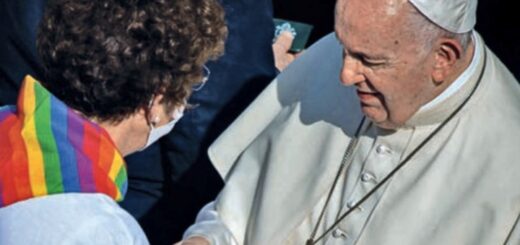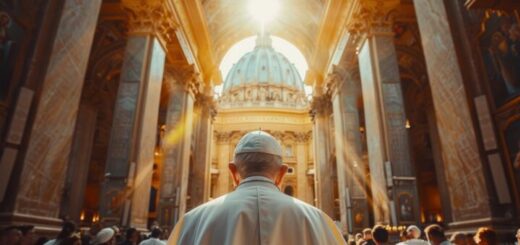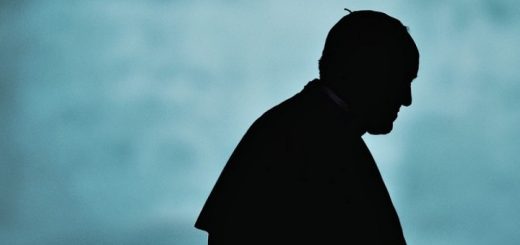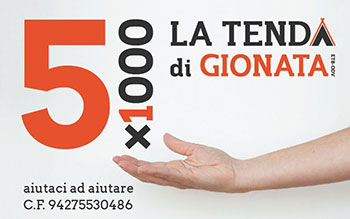The great paradox of gay priests
Article by Ross Bennes taken from his book The Sex Effect: Baring Our Complicated Relationship With Sex (Sex Effect. We bare our complicated relationship with sex) and published on the Slate website (United States) on April 20, 2017, freely translated by Giacomo Tessaro
Last March [2017] Pope Francis conquered the first pages by mentioning the possibility of ordering married men to the priesthood. There is no clue that Catholic practice can change, so the comments on the case have been premature, but those who speculated on the news has ignored something very interesting: admitting the married men would probably reduce the high percentage of gay priests to the priesthood.
While I did research for my book The Sex Effect I came across many scholars who told me that prohibiting the marriage to priests over time has altered the composition of the priestly body and, without wanting to, created a refuge in which many devout gay men can hide their sexual orientation. Since disqualification women and married men, the priesthood attracts many men who want to bury sex in an attempt to approach God; Since the Church condemns homosexual sex as such, many devoted gays are priests to avoid sex with other men and thus escaping damnation.
Obviously there are manyFactors that influence the choice of the priesthood, certainly sexuality, alone, does not determine a vocation, but it would be dishonest to underestimate its importance given the disproportionate number of gay priests, despite the hostility of the Church towards LGBTQ identities. As one of them said to the television program Frontline In February 2014: "I can't understand this schizophrenic attitude of the hierarchy towards gays, when many priests are".
How many gay priests are? Making a count is difficult, even if we have a large amount of homoerotic writings by consecrated that date from the Middle Ages onwards. According to most research (but the theme is thorny and these research have many limits, such as the limited number of priests interviewed) between 15% and 50% of US priests are gay, against 3.8% of the general population that is identified as LGBTQ.
In the last half century, moreover, the percentage of homosexuals in the priestly body has fallen a lot in the West. In the 70s many hundreds of priests abandoned the priesthood every year, often to get married. While the straight priests left the church for the joys of marriage, the percentage of gay priests only grew. The Los Angeles Times He led research on many thousands of US priests and the result was that 28% of them, in the age group 46-55, was gay, a higher percentage than that of other age groups and that reflected the escape of straight priests between the 70s and 80s.
In the 80s the high number of gay priests became very evident due to the crisis of AIDS. According to an estimate of the Kansas City Star, in the United States at least 300 priests died of diseases connected to the AIDS between the mid -1980s and 1999; According to the newspaper, the priests had a double probability, compared to other adult men, of dying of AIDS.
Since the Church defines homosexual orientation "Objective disorder" and the sexual act "Intrinsically bad", it is very surprising that a large number of homosexuals choose this profession, but it acquires a sense if you think that the Church encourages the sublimation of sexuality through prayer: "Homosexual people are called to chastity. Through the virtues of self -mastery, educators of inner freedom, through the support, sometimes, of a disinterested friendship, with prayer and sacramental grace, can and must, gradually and resolutely, approach Christian perfection" The catechism of the Catholic Church states [n. 2359].
Sexual sublimation is by far the most accredited hypothesis on why there are many gay priests. Others say that, as part of a group of minority and discriminated, gays are often more sensitive and ready to empathize with others and help them, a strong desire that leads many to the altruism of the priesthood. Another widespread explanation is that clerical celibacy is a good coverage for gays who want to hide their orientation.
According to the US Episcopal Conference "It seems that some homosexual men are attracted to the priesthood because they erroneously consider that mandatory celibacy is a means of avoiding clash with one's sexual identity". As the former gay priest says Christopher Schiavone "I thought I never needed to tell someone my secret, because celibacy made it in any case not very relevant".
Not that the Church is in the dark about this problem. According to a former President of the US Episcopal Conference "There is a continuous struggle to ensure that the priestly body is not dominated by homosexuals"; Pope Benedict XVI had to say that homosexual priests are "One of the miseries of the Church" and that it is necessary "To ensure that the celibacy of the priests is practically identified with the tendency to homosexuality".
Allowing married men to access the priesthood would probably enter more straight men in the priestly body, thus reducing the percentage of gay priests. Since permanent deacons in the world (which can be married and can replace a priest almost in everything, except in the consecration of the Eucharist and in the administration of confession) in the last forty years have increased by almost 40,000 units, there is probably a large number of married men who would aspire to the priesthood (it should be remembered, however, that, after being ordered permanent deacon, a celibate man can no longer marry, of dispensation by the bishop).
But the fact that some prelates would like to be less gay priests does not mean that a change in this sense would be beneficial for the institution: a great percentage of gay priests does not necessarily indicate a crisis, nor that the magisterium should change. Although other Christian denominations have shown that sexually active women, married men and LGBTQ people can be excellent shepherds, for centuries the Catholic model of the celibate and sexually abstinent priest served the institution quite well and most of them are psychologically well adapted and satisfied with his life and his activities.
The large number of gay priests is an indication of a complex phenomenon that makes many uncomfortable, an example of adjustment of the sexuality that produces unexpected consequences. In general, the Church continues to contest the changing cultural contexts and to encourage laws of sexual abstinence developed by ancient eschatological communities and ascetics of the desert as a reaction to an uncertain world, and to support themselves on clerical structures resulting from the social and economic conditions of the Middle Ages.
In doing so, the hierarchy contributes to a phenomenon that would prefer no one noticed: the rigid rules on homosexuality and on priestly celibacy only lead many gays to embrace the priesthood: "The bishops are in a very thorny situation. They live in a church that treats homosexuals draconian, but they know very well to draw a lot from them, in a much higher proportion than their effective number in society" Richard McBrien, priest and theologian says.
It is a truly disconcerting paradox, especially for gay priests who have to fight with cognitive dissonance; Yet, as we read in the book Human Sexuality in The Catholic Tradition (human sexuality in the Catholic tradition), "The Christian faith proclaims its deepest truths because of paradoxes". Perhaps the greatest paradox of today's Church is that his positions of authority are very often occupied by people he himself defines "Objectively disordered".
Original text: How the Catholic Priesthood Became An UNLIKELY HAVEN FOR Many Gay Men






